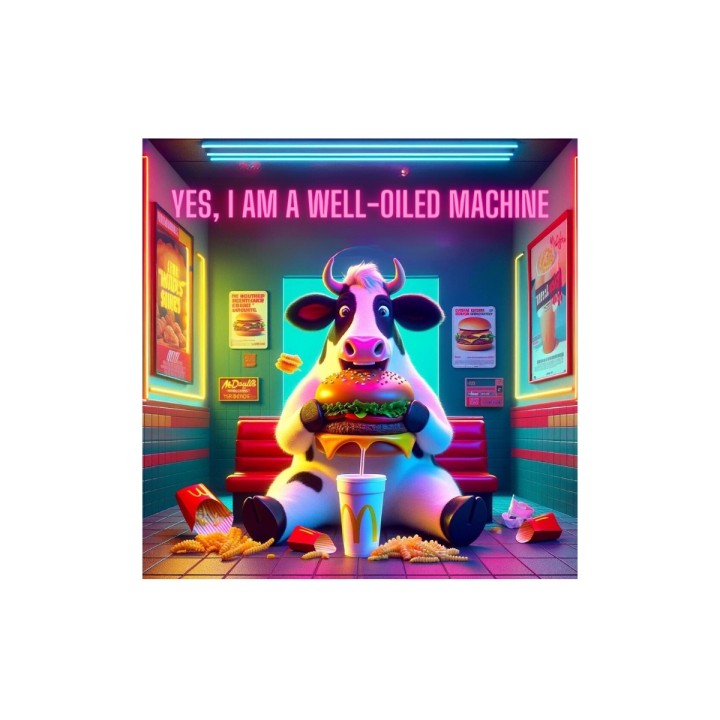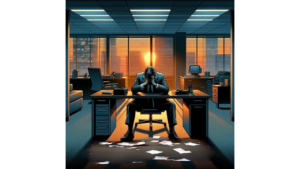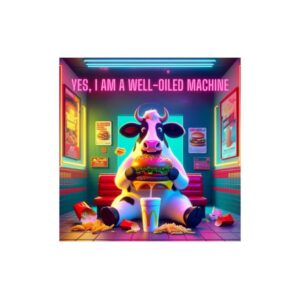“Please pull up and park at one of our Drive Thru parking spots. We’ll bring your food out when it’s ready.”
Hold on…. I just waited in this line and now it’s my turn at the window and you’re asking me to wait even longer somewhere else?
My body is a temple, so I’m not a regular customer at McDonald’s, but I’ve experienced their Drive Thru. I think it’s hilarious that they added dedicated parking spots to accommodate the inability to prepare and serve food fast enough to hand it over from the window. When I say a “dedicated” area, I’m talking about the fact that they made permanent signs to block spots for when the food isn’t ready in the drive thru. Why am I bringing this up in a newsletter about company culture? Business owners and leaders constantly face problems with their processes and systems. Left alone, those problems can create disillusioned employees, frustrated teams, and poor customer experience. Business owners need to be able to identify and prioritize problems, and determine root causes to fix them or else their employees and customers will leave. So let’s break this down from their perspective.
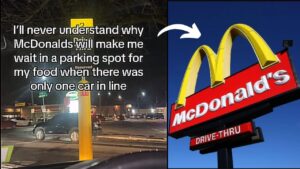
It was a sunny day at the Corporate office of McDonald’s when someone getting paid in exchange for their expertise likely announced confidently, “I’m sure these signs will fix the problem of a slow drive thru.” This is like when you see someone wearing a crazy outfit and think, “that person looked in a mirror this morning and said to themselves, ‘yeah, this looks great’ before they walked out the door.” This executive or manager sat in a meeting because they needed to discuss how to give customers a better drive thru experience. The drive thru was too slow, so they couldn’t get as many customers through the line, affecting revenue, profit, and customer experience. Their solution was to send customers to parking spots, so they didn’t block the flow of the drive thru line. Here is why I have an issue with this:
-
- It did not address the root cause of the problem
- It did not improve the customer experience (in my opinion)
- It did not come close to beating or even meeting the competition
How would I approach an inefficient system like this in a business you ask? Glad you did. Come on, let’s go…..

First, I would create visuals of the entire process like flow charts and customer journeys. I like visuals because they help me to clearly understand the actions and steps, but also start to give me insight on WHY things are done. Having a mapped out process will give you an opportunity to identify inefficient actions or potential bottlenecks. If you can, do this on a big whiteboard so you can step back and see the steps afterwards as well as make notes or edits along the way.
Second, I would ask questions about the process to those who are involved. My favorite question to ask during this exercise is “why do you do that?” What I really want to know is what they are trying to achieve by doing certain actions. The fun starts for me when people say something like, “well, we’ve always done it that way.” I am confident that I’ve rubbed people the wrong way just by asking this question. Some take it personally because I’m literally questioning the value of their actions. I get that. Here is an example of what I’m talking about:
I was helping a commercial landscaping company in their finance department. One of my objectives was to establish a more efficient system for applying customer payments to open invoices. The first thing I did was find out how they were applying payments and determine why it might currently be inefficient. I understand generally how payments should be applied in a business, but I had to see it happen in real time to get a handle on how their employees and team members did it. Many businesses think they are so unique and fall back to a “that wouldn’t work for us” attitude, but a service business is a service business. Meaning, the workflows for generating invoices, receiving payments, and then applying the payment should be very similar despite the industry.
After shadowing a couple of people and asking plenty of questions, I was able to make my initial diagnosis. The root cause wasn’t from the person responsible for applying the payments, even though they could have worked smarter not harder at times. The inefficiency was caused from limited internal communication, a lack of clear rules for creating invoices the same way for all customers, and customer education. Notice how it wasn’t one thing, but a combination of events that all led to confusion and chaos at the final step. The A/R person was just sending payments to a dedicated parking spot so she didn’t get too far behind on other work. (See how I connected it back to my original drive thru story….crushin’ this content game!). We implemented a few changes as well as communicated new rules and expectations for customers to follow. The team started seeing results immediately and spent less time chasing documentation or email correspondence.

Getting back to how Chic-Fil-A fits in. Many of us have used a drive thru at any Chic Fil-A. It is the epitome of a well-oiled machine when it comes to fast food. Most importantly, the customer gets their food while in the drive thru, without waiting a long time, and their expectations are met consistently. Here are a few key points to how I think they’ve put together an incredibly efficient and effective system for serving their customers:
- They utilize technology for taking orders, making food, preparing and packaging the order, and maintaining the first-in first-out style assembly line.
- Each person involved fully understands their role and responsibilities.
- Each role is defined and clearly communicated
- There may redundancy in some steps, but you don’t see their employees stepping on the toes of others or impeding them from completing their tasks.
- There is a reason why they do what they do…. What the order taker does will affect the kitchen. What the order taker and kitchen do will affect the team member at the window.
McDonald’s and I share something unique.
Their first drive thru was created in 1975 in Sierra Vista, AZ near Fort Huachuca. That is also my birthplace, so the universe has apparently called to me to write this article. Despite being one of the pioneers of the drive thru, they are severely lagging behind Chic-Fil-A and others.
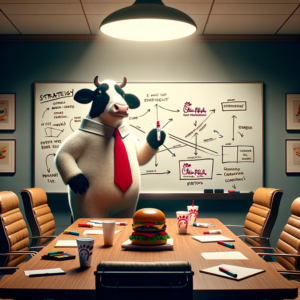
If you need to fix an inefficient or broken process in your business:
Map it out so you can visualize each step. Ask the people on the front lines to explain the steps as you go. Don’t get bogged down in “how” they do each action but dig deep to discover “WHY” they do each step. You might be able to identify an alternative method to achieve the same objective or the opportunity to eliminate wasted resources. People will want to tell you all about “how” they do things because it’s a way for them to justify their job and relevance. Sounds harsh, but it’s human nature. That can be discussed after you are clear on the “why” as you start to select and implement the tools, technology, or team members to execute the new process. And if you ever hear an employee say, “I’m not sure why. We’ve just always done it that way.” Please call me!

